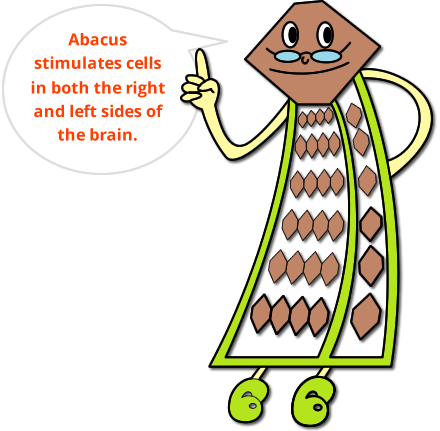About Us
Abacus is an ancient counting tool used in calculations that is believed to date back to Aztec times. A common misconception about abacus is that it is only useful for early learners, as this is not true. This tool is indeed an ideal device to promote the learning of young people, but can be used with the likes of adults to aid in mental math, as well as memory. The use of an abacus for calculations provides stimulation of the right brain, considered to be the creative and imaginative side, as well as the left brain, which handles numbers and math.
The integration of the two sides of the brain by the use of abacus provides countless benefits for the young and the old including:
Fast and accurate mental math skills in addition, subtraction, multiplication and division
Aid in memorization skills
Increased mental imagery skills
Foundness of math

HISTORY
In Japanese, the abacus is called soroban (算盤, そろばん, lit. “Counting tray”), imported from China around 1600.[19] The 1/4 abacus appeared circa 1930, and it is preferred and still manufactured in Japan today even with the proliferation, practicality, and affordability of pocket electronic calculators. The use of the soroban is still taught in Japanese primary schools as a part of mathematics.
Abacus Level Structure
The abacus skill will be certified in 14 different levels by the test. Please refer below chart for better understanding for the levels.
At each level, students will learn below abacus skills.
| 10th | Addition / Subtraction up to 3 digit numbers + Anzan (Mental) |
| 9th | Addition / Subtraction, Multiplication |
| 8th | Addition / Subtraction, Multiplication, Division |
| 7th | |
| Addition / Subtraction, Multiplication, Division | |
| 4th | |
| 3rd | Decimal numbers in Multiplication, Division |
| 2nd | Negative number in Addition / Subtraction |

Contact Us
Please feel free to contact us with any questions you may have. We will respond as quickly as we can.
